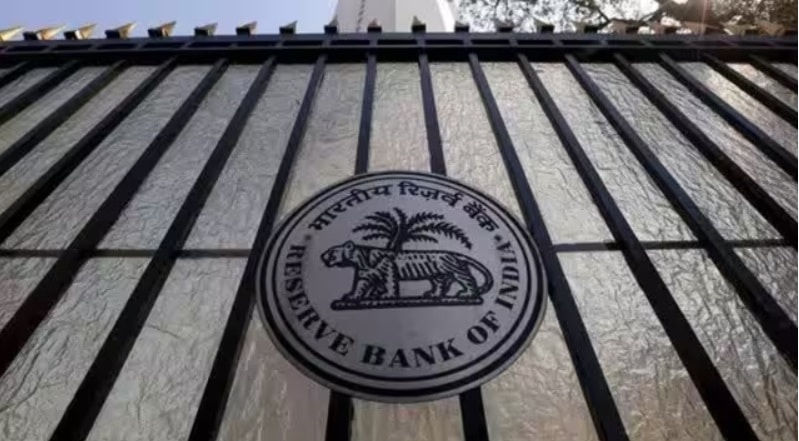What’s in today’s article?
- Why in news?
- What is the Old Pension Scheme (OPS)?
- What were the concerns with the OPS?
- What is New Pension Scheme (NPS)?
- What is the Difference between NPS and OPS?
- News Summary: Return to OPS by few states would exert huge burden on their finances- RBI
- Key highlights of the report titled “State Finances: A Study of Budgets of 2023-24”
Why in news?
- RBI has released the report “State Finances: A Study of Budgets of 2023-24”.
- In this report, the RBI said that the return to the Old Pension Scheme (OPS) by a few states would put a huge burden on their finances.
- This will restrict them from undertaking capital expenditure to drive the growth.
What is the Old Pension Scheme (OPS)?
- OPS offers pensions to government employees on the basis of their last drawn salary. 50% of the last drawn salary.
- The attraction of the Old Pension Scheme lay in its promise of an assured or ‘defined’ benefit to the retiree. It was hence described as a ‘Defined Benefit Scheme’.
- E.g., if a government employee’s basic monthly salary at the time of retirement was Rs 10,000, she would be assured of a pension of Rs 5,000.
- Also, like the salaries of government employees, the monthly pay-outs of pensioners also increased with hikes in dearness allowance or DA announced by the government for serving employees.
- The OPS was discontinued by the Central government in 2003.
What were the concerns with the OPS?
- The main problem was that the pension liability remained unfunded — that is, there was no corpus specifically for pension, which would grow continuously and could be dipped into for payments.
- The Government of India budget provided for pensions every year; there was no clear plan on how to pay year after year in the future.
- The ‘pay-as-you-go’ scheme created inter-generational equity issues — meaning the present generation had to bear the continuously rising burden of pensioners.
- Recently, RBI red-flagged the return to the OPS by some states as a major fiscal concern.
- Several states, including Himachal Pradesh, Jharkhand, Punjab, Chhattisgarh and Rajasthan have announced a return to the OPS.
- In this regard, the RBI said “by postponing current expenses to the future, states risk accumulation of unfunded pension liabilities in the coming years”.
What is New Pension Scheme (NPS)?
- As a substitute of OPS, the NPS was introduced by the Central government in 2004.
- This pension programme is open to employees from the public, private and even the unorganised sectors except those from the armed forces.
- The scheme encourages people to invest in a pension account at regular intervals during the course of their employment.
- After retirement, the subscribers can take out a certain percentage of the corpus.
- The beneficiary receives the remaining amount as a monthly pension, post retirement.
- Nodal agency: Pension Fund Regulatory and Development Authority (PFRDA)
What is the Difference between NPS and OPS?
- The Old Pension Scheme is a pension-oriented scheme. It offers regular pensions to employees during retirement.
- Thus, in OPS, the pension amount is constant and guaranteed.
- On the other hand, the National Pension Scheme is an investment cum pension scheme.
- Therefore, NPS doesn’t guarantee fix returns as it is subjected to market volatility.
- i.e., in NPS, contributions are defined, but benefits depend on the market.
News Summary: Return to OPS by few states would exert huge burden on their finances- RBI
Key highlights of the report titled “State Finances: A Study of Budgets of 2023-24”
- Return to OPS is not healthy
- The return to the OPS by a few states and reports of some other states moving in the same direction would exert a huge burden on state finances.
- Estimates suggest that if all the state governments revert to OPS from the NPS, the cumulative fiscal burden could be as high as 4.5 times that of NPS, with the additional burden reaching 0.9 per cent of GDP annually by 2060.
- Tax mop-up
- The implementation of goods and services tax (GST) has led to increased tax buoyancy for the states.
- The overall tax efforts of the states are strong.
- However, further improvement in tax revenues will require them to strengthen their tax capacity, including through tax reforms and effective and innovative tax administration.
- In case of non-tax revenues, there is considerable scope for states to increase them through revisions of:
- user charges on electricity, water and other public services,
- royalties and premiums from mining, and
- better financial management of their public sector units (PSUs).
- Revenue expenditure
- On the expenditure side, growth in revenue expenditure during the year so far (April-September2023-24) at 8.9 per cent is much lower than the full-year budget estimate of 18 per cent.
- It provides space for undertaking higher capex, while persevering with fiscal consolidation.
- States on the path of prudent fiscal management for 2023-24
- States envisage a continuation of prudent fiscal management for 2023-24, with the consolidated gross fiscal deficit (GFD) budgeted at 3.1 per cent of GDP.
- States’ total outstanding liabilities are budgeted to fall to 27.6 per cent of GDP for 2023-24 from the peak of 31 per cent in 2020-21.
- However, outstanding liabilities may remain higher than 30 per cent of gross state domestic product (GSDP) for many states.
Q1) What is Pension Fund Regulatory and Development Authority (PFRDA)?
The Pension Fund Regulatory and Development Authority (PFRDA) is a regulatory body that oversees the pension sector in India. It was established on August 23, 2003. The PFRDA operates under the Ministry of Finance in the Government of India.
Q2) What is defined benefit scheme?
A defined-benefit plan is an employer-sponsored retirement plan where employee benefits are computed using a formula that considers several factors, such as length of employment and salary history.
Source: Return to OPS by few states would exert huge burden on their finances: RBI | Indian Express | Times of India | The Hindu Business Line
Last updated on November, 2025
→ Check out the latest UPSC Syllabus 2026 here.
→ Join Vajiram & Ravi’s Interview Guidance Programme for expert help to crack your final UPSC stage.
→ UPSC Mains Result 2025 is now out.
→ UPSC Notification 2026 is scheduled to be released on January 14, 2026.
→ UPSC Calendar 2026 is released on 15th May, 2025.
→ The UPSC Vacancy 2025 were released 1129, out of which 979 were for UPSC CSE and remaining 150 are for UPSC IFoS.
→ UPSC Prelims 2026 will be conducted on 24th May, 2026 & UPSC Mains 2026 will be conducted on 21st August 2026.
→ The UPSC Selection Process is of 3 stages-Prelims, Mains and Interview.
→ UPSC Result 2024 is released with latest UPSC Marksheet 2024. Check Now!
→ UPSC Prelims Result 2025 is out now for the CSE held on 25 May 2025.
→ UPSC Toppers List 2024 is released now. Shakti Dubey is UPSC AIR 1 2024 Topper.
→ UPSC Prelims Question Paper 2025 and Unofficial Prelims Answer Key 2025 are available now.
→ UPSC Mains Question Paper 2025 is out for Essay, GS 1, 2, 3 & GS 4.
→ UPSC Mains Indian Language Question Paper 2025 is now out.
→ UPSC Mains Optional Question Paper 2025 is now out.
→ Also check Best IAS Coaching in Delhi

















